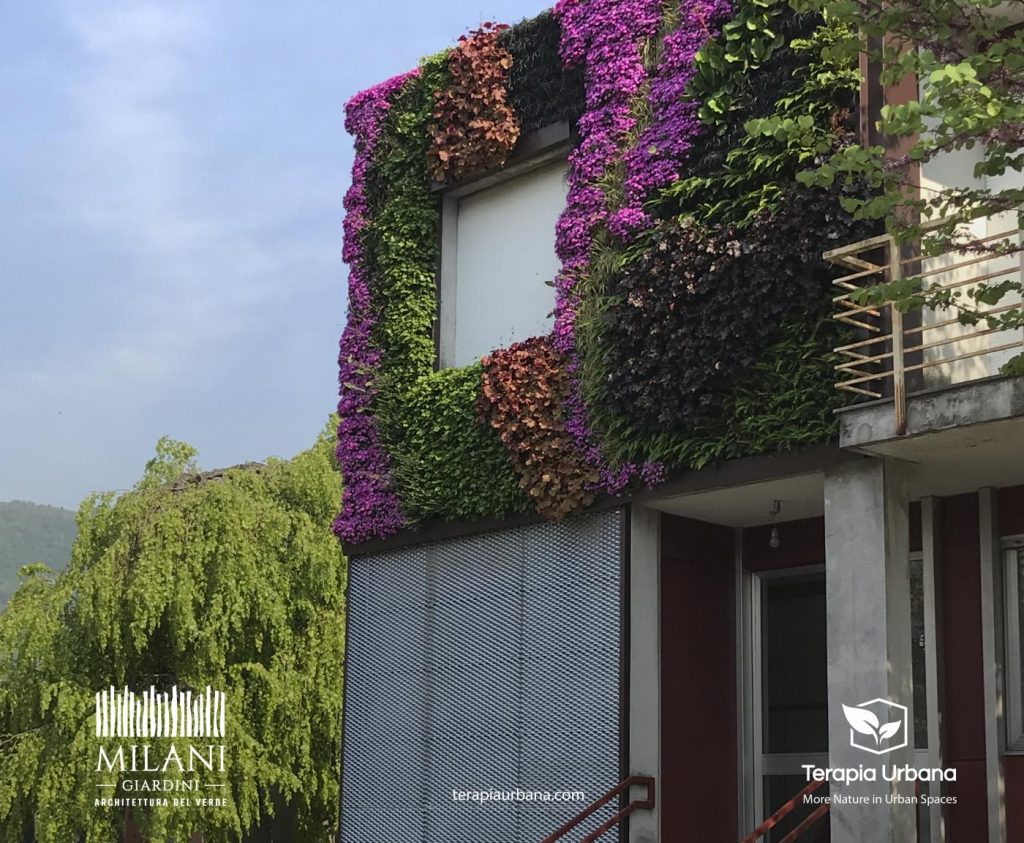In the last decades we are witnessing an important change in the big metropolises or cities; the increase in population and its density has led to the urbanization of large spaces and the construction of residential buildings, entertainment and sports centers, causing a significant reduction in green areas and affecting ecological systems.
The noise, air and light pollution produced by cities has caused a severe impact on the health and well-being of people. Faced with this problem, different sustainable proposals arise so that green balances the pulse with gray in the city. Among them, the incorporation of vertical gardens in buildings, to improve people’s quality of life, and the recovery of lost green areas for the benefit of local flora and fauna (birds, insects).
Bioclimatic Facades
The landscaped facades constitute green elements that balance the increase in built space, and combat the scarcity of surface space. These systems make it possible to take advantage of the exterior areas of buildings, especially in areas with higher urban density. Green facades contribute to improving air quality and acoustic conditions, and protect buildings from temperature fluctuations and extreme weather conditions.
Resilient Urbanism
As a consequence of the situation raised and based on the proposal to install vertical gardens in buildings, the concept of resilient urbanism arises, an architecture that focuses on long-term urban planning and development programming, considering the needs of adaptation to climate change.
Strategies include the development of guidelines on green spaces, for new developments or voluntary improvement of existing structures, through incentives.
Engaging businesses in resilient development strategies can become a vital goal for cities. Through the participation of local institutions and businesses, they can strengthen their social responsibility, promoting the development of healthier areas and the consequent well-being of people.
Cities that stand out for their sustainable urbanism
Copenhagen was the first European city to legislate forcing new buildings to install some sort of green structure as part of its strategy to become the world’s first zero-emissions city by 2025.
Likewise, german cities such as Berlin, Munich or Stuttgart have been betting on green roofs for 50 years and around 35% have legislated on the matter.
In France the roofs of new buildings built in commercial areas must be covered, at least partially, with plants or solar panels since 2015.
Toronto, in Canada, was in 2010 the first city in North America to legislate on the matter.
Other cities in the world such as Chicago, New York and Shanghai have joined the green roofs and vertical gardens.
An initiative within the SDGs
The Sustainable Development Goals (SDGs) are a universal call to take action to end poverty, protect the planet and ensure that all people enjoy peace and prosperity. They were presented at the United Nations General Assembly on September 25, 2015 and entered into force in January 2016.
Development Goal 11 seeks to make cities and human settlements inclusive, safe, resilient and sustainable. The construction of sustainable cities, which address resilient urban planning, and contemplate the strategic construction of vertical gardens is a perfectly framed within this objective.
Urban greening systems effectively mitigate nature-city imbalance problems that have a direct influence to climate change, one of the main goals of these global objectives.
At Terapia Urbana we are committed to design supported by construction systems that integrate vegetation as one more component of buildings. We prioritize a bioclimatic and sustainable design, which manages to find key allies in green roofs and vertical gardens to build respecting the environment.
(: / : Milani Giardini)

